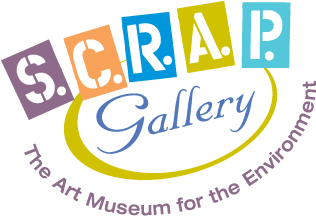"Love is Greater Than Shelter" is a multimedia piece by Renae Barnard that explores the search for comfort and security through romantic love.
Inspired by bowerbirds, Barnard uses found materials to build a nestlike structure. However, like the structures created by a bower bird, the form is not for shelter but serves a more ornamental purpose, fostering connection, communication, and relationship building.
Bowerbirds are known for their decorative structures, that while somewhat resembling nests, are used as a backdrop for the males' performative mating displays. Bowerbirds are known for their discerning use of materials, selecting a range of objects in like colors that vary depending on the region of the birds. In several cases, Bowerbirds appear to utilize forced perspective, laying larger objects in the back and smaller in the front, a creative visual tool rarely observed among animals.
This optical illusion is a natural form of visual trickery, a theme that resonates with Barnard and her work. Humans often look to forms of self-deception to perform an illusion of security, frequently during unstable times. Creation may offer a sense of control, whether building a space for comfort, a work of art, or a relationship. At times of distress, security, or the sensation of security, can be constructed with whatever is at our disposal, creating emotional shelter from readily available components of our lives.
Barnard's use of yarn and twine is not only a nod to repurposing often discarded or overlooked materials to build something new, but the pathways and sense of control many seek over their lives. Considering the Greek Moirai, Barnard's use of string offers an illusion of control over fate, destiny, and the flow of life. The soft material is then covered with layers of paints and hardened into place, removing all flexibility and solidifying any decisions or pathways. The hardened external materials immobilize and protect the string, rendering it nearly unidentifiable in its newly constructed form.
Barnard considers the tangling forces of gender norms and the friction of power structures against the day-to-day experience of moving through the world.
Renae Barnard is a multidisciplinary artist. Barnard received her Master of Fine Arts from Claremont Graduate University and her BA from California State University, Los Angeles. She has recently completed projects in cooperation with the National Immigration Law Center and the City of Santa Monica Department of Cultural Affairs. She is a recipient of the Sue Arlen Walker and Harvey M. Parker Memorial Fellowship, the Armory Center for the Arts Teaching Artist Fellowship, The Ahmanson Annual Fellowship, Lincoln Fellowship Award, and Christopher Street West Art and Culture Grant.








